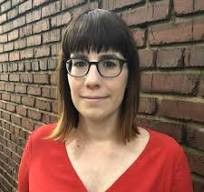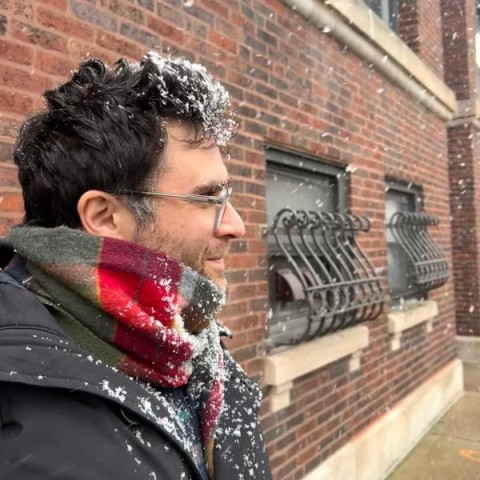
Tamara Golan (Assistant Professor of Art, Art History) studies and teaches medieval and early modern art from northern Europe. She specializes in the visual and material culture of Switzerland and southern Germany, and her interests range from the intersections of art, science, and the law; paradigms of expertise; artistic fraud and deception; and questions of materiality. Her recent courses include “Devotion – Dissent – Disenchantment? Art in the Age of the Protestant Reformation,” “Death and Dying in the Middle Ages,” “History and Culture of Printmaking in Early Modern Europe,” and “Medieval Visions.”

Noel Blanco Mourelle (Assistant Professor of Medieval Iberian Studies, Romance Languages and Literature) is a specialist in medieval Iberian languages and cultures. His teaching and research engages with themes of religious conversion, theories of universalism, political theology and history of the book. He teaches courses in both English and Spanish, and his recent courses include “Iberian Literatures and Cultures: Medieval and Early Modern,” “Waiting for the End of the World,” “Inquisiciones,” and “Introducción a las literaturas hispánicas: textos españoles clásicos.”
Tamara and Noel co-teach a course called “Witchcraft and the Cultural Imagination” in which students create digital exhibitions using Omeka. We talked with them about this innovative assignment and their approach to co-teaching.
Tell us a bit about the course context. Why witchcraft? Why now?
The course started with a conference paper from Noel on witchcraft, but both of us work on witchcraft, magic, and occultism, albeit from different disciplinary perspectives. We thought, “why don’t we just teach a class on witchcraft?” We thought that Gen Z would definitely want to take a class on this, given their delightful irreverence toward breaking norms, their ineffable humor, and the renaissance of astrology in popular culture (seen in things like #witchesoftiktok).
What teaching challenge did you want to address with this approach/technique?
During the time the university was in hybrid instruction, we thought intentionally about what we wanted the summative assessment to be. The traditional research paper is an honorable task, but it didn’t really fit with our goals. So, we opted for a digital portfolio, which let students do creative writing, grapple with different kinds of materials, and be creative in different ways from a research paper. The digital exhibit assignment, using Omeka, software designed to help create and manage online digital collections, was a generative project for many students, because they had the experience of using images as part of an argument and narrative. In creating their own exhibitions and iterating upon those of former students, students engage in conversation with others – a scholarly practice.
Tell us about the digital exhibition that students create with Omeka. How does it help meet your student learning goals?
When we introduce the project, students receive a list of broad themes (for example, witchcraft and film). In assigned project groups of six students, they narrow down their topic (for example, to “witchcraft and romcoms”). Then students work on the exhibition in class, creating and finalizing their object list, and writing about the exhibition objects using Omeka. It has a steep learning curve but it’s ultimately a simple tool when it comes to generating digital exhibitions. To make the project more feasible, we heavily scaffold this project and assign different tasks for the graduate and undergraduate students in each group.
What did you do to prepare to put it into action in your class?
We prepared in two ways for implementing this project in our class. First, we met with Joe Lampert in the CCTL, who helped us think about how to better scaffold the project for students. We also met with Taylor Faires (Head of Research Innovation in the Library) to train on Omeka and to find out about new features that are available since we last used it.
What are the benefits and challenges of co-teaching this course?
We’re two medievalists with different approaches, methodologies, and disciplinary traditions. This combination results in interdisciplinary superpowers. There’s someone else in the classroom with knowledge that you don’t have, and students learn from each of us. We learn from each other too. Team teaching, though, requires strong collaboration and communication but it’s rewarding.
What is working well about what you’re doing, and why do you think it works?
We constantly reflect on what we’re doing and whether it’s working for students and for us. Introducing broad themes to students at the start of the project was something we tried in a later iteration of the class, and that was an idea gained from talking with the CCTL. Introducing the themes earlier let students develop their topics more quickly and come up with more sophisticated ideas. Overall, our students have been thriving in the class – they do the work and have interesting things to say, and they have autonomy and ownership in the final project. We love seeing their curated exhibitions!
Further Reading
Baker, M., & Pollard, J. (2020). Collaborative Team-Teaching to Promote Interdisciplinary Learning in the Undergraduate Classroom: A Qualitative Study of Student Experiences. Journal of Interdisciplinary Studies in Education 9(2), 330-352. Link to full text through ERIC
Jones, F., & Harris, S. (2012). Benefits and drawbacks of using multiple Instructors to teach single courses. College Teaching, 60(4), 132–139. https://doi.org/10.1080/87567555.2012.654832 Link to full text through JSTOR
Meizlish, D. & Anderson, O. (2018). Teaching in teams: A planning guide for successful collaborations. CRLT Occasional Papers 37, 1-9. Link to full text through ERIC
Plank, K. (2013). Team Teaching. The IDEA Center. Idea Papers, 55, 1–7. Link to full text through IDEA